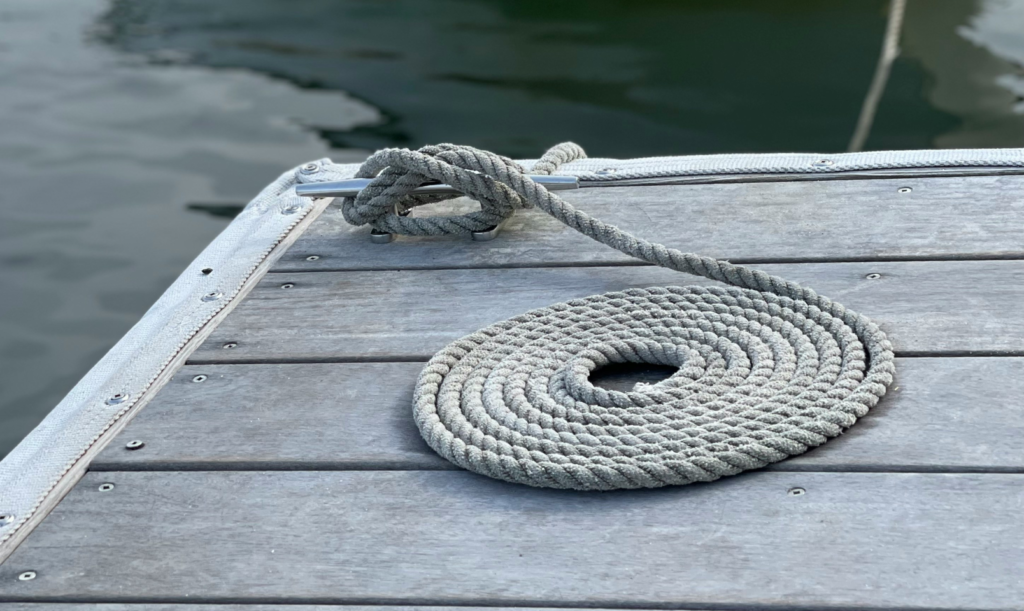Dock lines are essential for safely securing your boat to the dock, but choosing the right ones and knowing how to use them effectively can make all the difference in keeping your vessel secure. Here’s everything you need to know:
- Types of Dock Lines: There are several types of dock lines available, including braided nylon, three-strand nylon, and polypropylene. Braided nylon lines are durable, have high stretch capabilities, and are resistant to UV rays and abrasion. Three-strand nylon lines are traditional and offer excellent shock absorption. Polypropylene lines are lightweight and float, making them ideal for temporary or light-duty use.
- Size Matters: The size of your dock lines should be determined by the size and weight of your boat, as well as the conditions in your docking area. As a general rule, use lines with a diameter of 1/8 inch for every 9 feet of boat length. For example, a 30-foot boat would require lines with a diameter of at least 3/8 inch.
- Length: Dock lines should be long enough to allow your boat to move with the tide and waves without pulling against the dock. A good rule of thumb is to use lines that are at least 2/3 the length of your boat. Additionally, consider using spring lines to prevent your boat from drifting too far forward or backward.
- Securing Techniques: Properly securing your dock lines is crucial for keeping your boat in place. Use cleats or bollards to tie off your lines, making sure to use the appropriate knot for the job. The most common knots for securing dock lines include the cleat hitch, bowline knot, and round turn and two half hitches.
- Inspect Regularly: Inspect your dock lines regularly for signs of wear, fraying, or damage. Replace any lines that show signs of deterioration to ensure the safety and security of your boat. Additionally, consider using chafe guards or sleeves to protect your lines from abrasion against sharp edges or rough surfaces.
- Weather Considerations: Be mindful of weather conditions when securing your boat with dock lines. In high winds or stormy weather, use additional lines and fenders to provide extra protection and prevent damage to your vessel.
By understanding the different types of dock lines, sizing them appropriately, using proper securing techniques, inspecting them regularly, and considering weather conditions, you can ensure the safety and security of your boat while docked.

